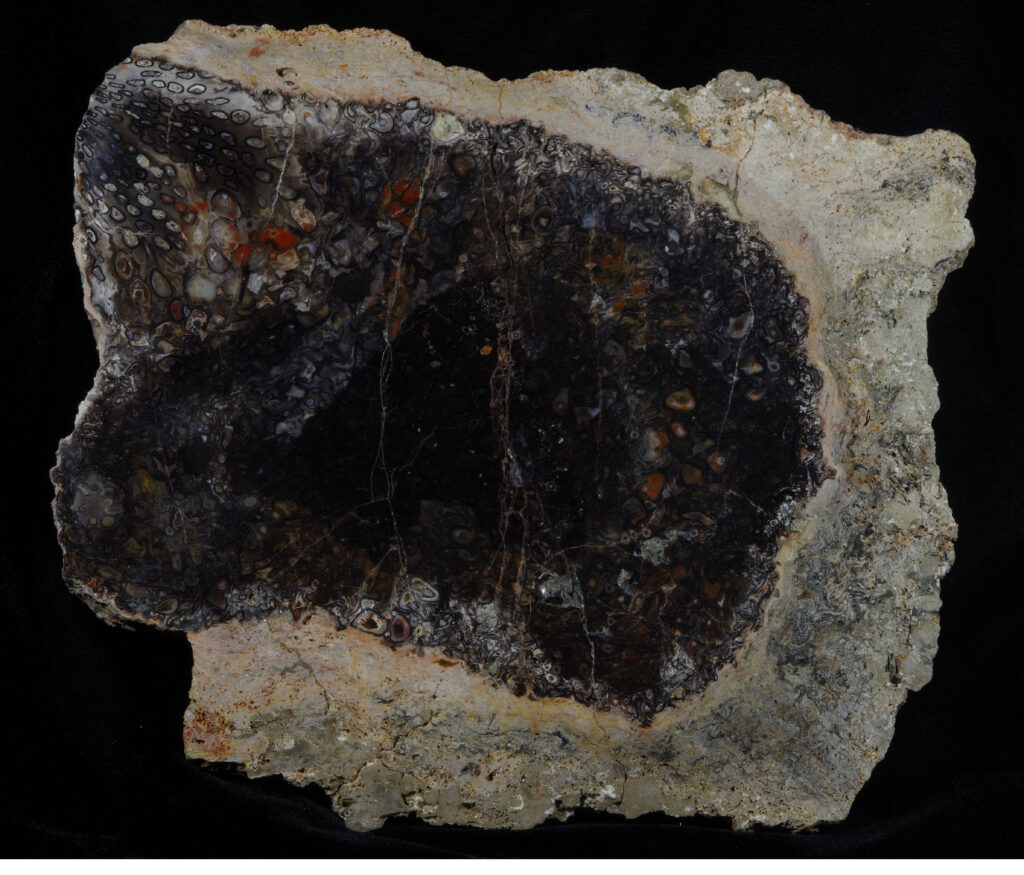
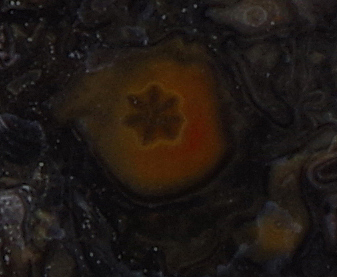
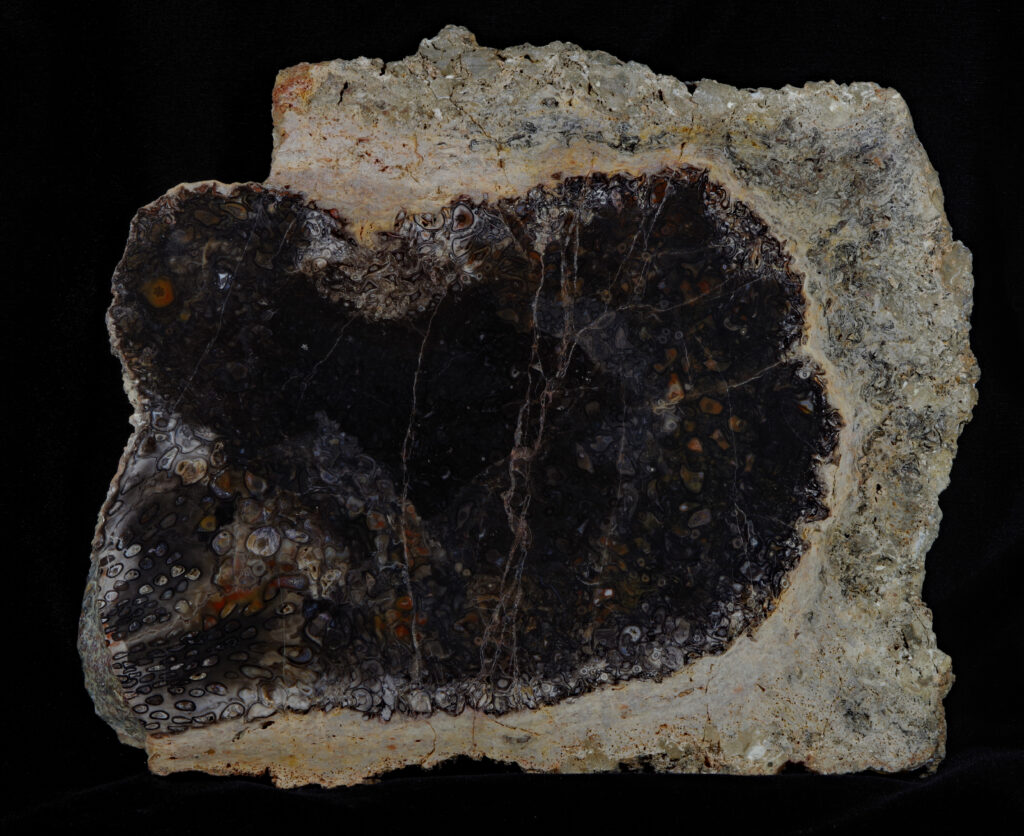
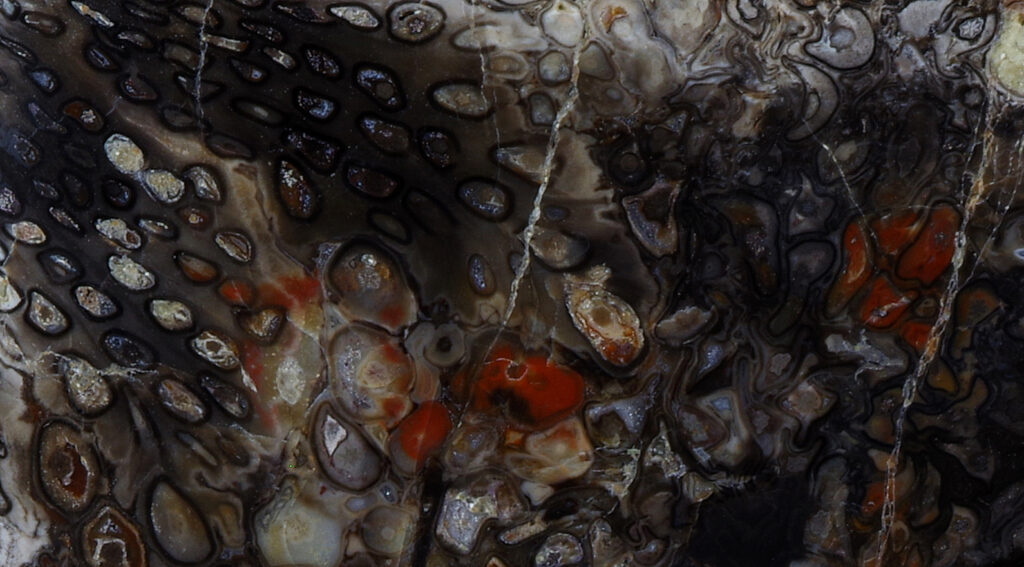
Germany 1. Chemnitz. Psaronius. Since I am unfamiliar with European fossil woods, I am including the original comments on this piece made by the seller, Peter Huber, in 2006.
“Now let me explain to you the special points with this slab.
First of all the site is classic. It was here that petrified wood was first described scientifically. Psaronius was sought after early and cut to gemstones for the Kings of Saxony. It is still very sought after and almost impossible to get. Nowadays practically nothing can be found anymore, the city has been built above the site. Most pieces have been found a lot earlier, maybe 100 years ago.
Psaronius is an early tree fern. The stellar bundles are surrounded with loose roots. These have the beautiful stars in them. Open parts were filled with beautiful agates – this combination made it so sought after for jewellery. The pieces are very old, dating back to the Permian Period. Almost all pieces from here are crazed and need stabilizing before polishing. This one hardly has any traces tough. Again, this is normal for this site.This slab (not a full round but a major part of root section) has a tubicaulis growing in it. This was a vine using psaronius to reach higher levels in the wood canopy (and light). This tubicaulis is very large (actually the largest so far known), over an inch in diameter. It has small rootlets all through the psaronius. It also has nice leaf bases.
This is a fossil you understand best under the microscope. You need to see the details perfectly preserved after 250 million years. Some years ago I sold one round off this log to the PRI in Ithaca New York. It is on display there as a major item.
For the untrained eye this slab may not be spectacular, but everyone falls for the beauty under the microscope. I consider this the most valuable addition to your collection. The price is 1350 Euro.”[ Note: 1350 euros in 2006 equates to $1701 and when adjusted for inflation is today worth $2564.] It is polished on both sides.
24 by 21 cm faces; 16 mm thick; four pounds. $1350
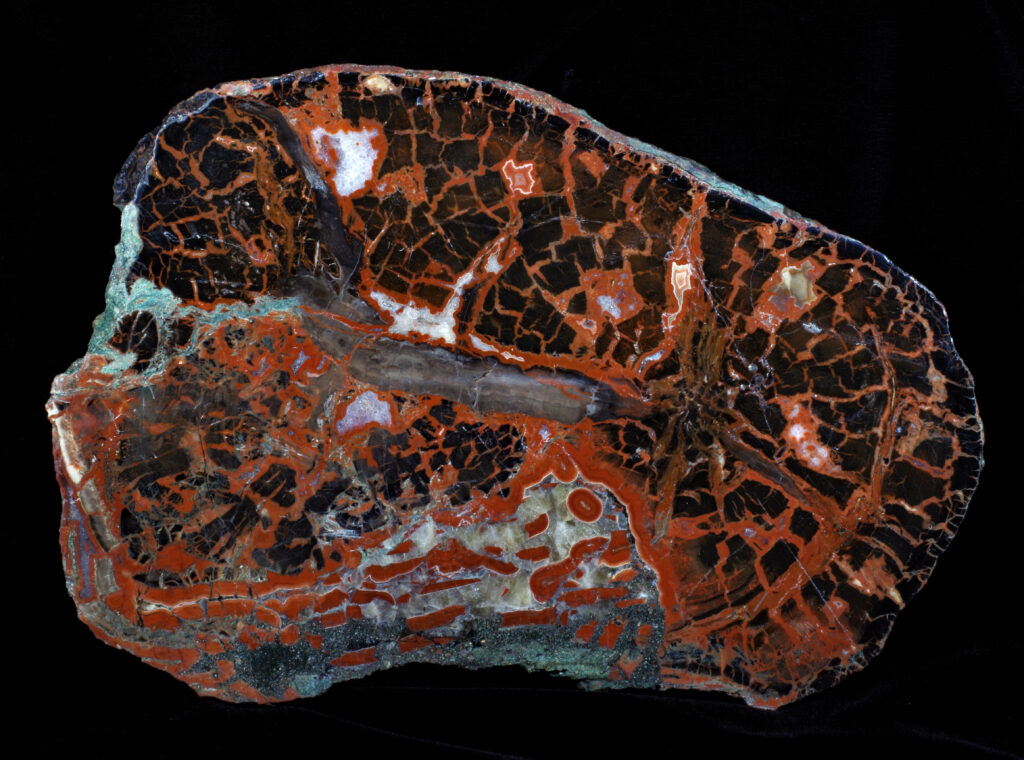
Germany 2. Winnweiler. Since I am unfamiliar with European fossil woods, I am including the original comments on this piece made by the seller, Peter Huber, in 2006.“ You will find information on this piece in Dresbach’s green book starting page 88. Another section of this log is pictured on page 90 – it is not as nice as the one I found. Only 5 slices have been cut, others are in Museums (e.g. Munich and Chemnitz). This round from Winnweiler was hit by a volcanic blast 250 million years ago. Parts of the tree were shattered and agates have grown into the voids. Some areas have even caught fire before petrification, showing shrinkage patterns. Look it all up in the Dernbach book. Several other publications have cited this log for descriptions! With 31cm by 21 cm it is quite large. Due to the volcanic history it has a slight – absolutely normal crazing. It is as perfect as can be for wood of this age! It even has a tinge of greenish ash embedded adding to the great contrasts. For me it was the first time ever to find pieces from this site. I have been wishing for an addition to my collection for MANY years now. Never before have I seen any for sale (except for broken slab pieces), never full rounds! I will be keeping a much smaller round for myself, far away from the quality of this round. It is quite unique.”
19 by 30 cm polished face; very thick at 26 mm; seven pounds and two ounces. $1500
